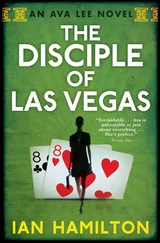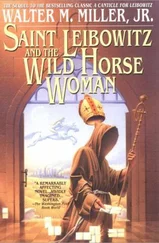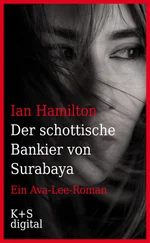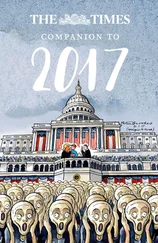Ian Hamilton - The wild beast of Wuhan
Здесь есть возможность читать онлайн «Ian Hamilton - The wild beast of Wuhan» весь текст электронной книги совершенно бесплатно (целиком полную версию без сокращений). В некоторых случаях можно слушать аудио, скачать через торрент в формате fb2 и присутствует краткое содержание. Жанр: Криминальный детектив, на английском языке. Описание произведения, (предисловие) а так же отзывы посетителей доступны на портале библиотеки ЛибКат.
- Название:The wild beast of Wuhan
- Автор:
- Жанр:
- Год:неизвестен
- ISBN:нет данных
- Рейтинг книги:3 / 5. Голосов: 1
-
Избранное:Добавить в избранное
- Отзывы:
-
Ваша оценка:
- 60
- 1
- 2
- 3
- 4
- 5
The wild beast of Wuhan: краткое содержание, описание и аннотация
Предлагаем к чтению аннотацию, описание, краткое содержание или предисловие (зависит от того, что написал сам автор книги «The wild beast of Wuhan»). Если вы не нашли необходимую информацию о книге — напишите в комментариях, мы постараемся отыскать её.
The wild beast of Wuhan — читать онлайн бесплатно полную книгу (весь текст) целиком
Ниже представлен текст книги, разбитый по страницам. Система сохранения места последней прочитанной страницы, позволяет с удобством читать онлайн бесплатно книгу «The wild beast of Wuhan», без необходимости каждый раз заново искать на чём Вы остановились. Поставьте закладку, и сможете в любой момент перейти на страницу, на которой закончили чтение.
Интервал:
Закладка:
“It said that this particular painting was consigned to a gallery in Zurich. There is no record of Monet’s ever working with any Zurich gallery. No matter; the painting was supposedly sent to Switzerland. When I checked into the Swiss gallery, it turned out that it had existed but went out of business thirty years ago. Convenient, no? The gallery sells the painting two months later to a Herr Bauer, a Zurich resident. There’s an address on the bill of sale, and it turned out to be the address of a bakery. Well, maybe Herr Bauer was a baker. So I kept ploughing on. Just before the Second World War, Herr Bauer sells the painting back to the gallery where he bought it originally. The gallery sells it again, this time to a Norwegian named Andersen, who takes it off to Oslo. Again the bill of sale is informative, but when I check on Mr. Andersen, I discover he doesn’t exist or he gave the gallery the wrong address. And finally we have Mr. Andersen selling it through an agent to Mr. Kwong. I can’t locate the agent.
“Aside from the consistency in discrepancies — and consistency is what I look for, mind you; anyone can make a bookkeeping error, but when they pile up, the notion of error disappears — I did a search to see if the painting had ever been exhibited anywhere. It hadn’t. Now, we’re talking about a Monet, not your brother Harry’s watercolour that you might hang on the living room wall, and there’s nothing more that art collectors love than showing off their collection. There isn’t a museum or art gallery in the world that can stay fresh without loans from private collections. So unless Herr Bauer and Mr. Andersen were complete recluses, the odds are that the picture would have surfaced somewhere, sometime — Is this helpful?”
“Tremendously,” Ava said. “Tell me, though, wouldn’t it be quicker and easier just to send the painting to a lab for an analysis?”
“That is the last thing to rely on,” Torrence said. His face was getting flushed, the Chianti taking its toll. “Your good forger knows his paints and, more important, knows his artists’ paints. Paint can be aged, and canvases too. It isn’t difficult.”
“This is really quite interesting,” Ava said.
“These are clever men.”
“That leads me to Mr. Kwong. I know very little about him other than that he was a dealer whom the Wongs trusted.”
“He was a ceramics dealer, and not half bad at it. He wasn’t big time but he knew his stuff and had a decent enough clientele, nearly all Chinese, of course.”
“So how did he get into paintings?”
“The Wongs asked him.”
“He knew how much about the area?”
“From what I can gather, hardly anything. The Wongs seem to have been his only clients for paintings.”
“So how could he locate and buy all those works?”
“Now that is the question, isn’t it?” Torrence said, emptying the bottle into his wineglass. “How did he indeed?”
“Have you given it any thought?”
“A bit, and it seems to me he probably just tapped into associates here who referred him to some people in Europe or the U.S. It isn’t that big a world, our art world. All he had to do was contact some of the major dealers and galleries, tell them he had a client who was interested in buying Fauvist works, and ask them to let him know if something came on the market. There’s always someone interested in selling.”
“How would he finance those purchases?”
“He didn’t, I would imagine. He probably had some kind of commission arrangement.”
“But he did the invoicing.”
“He wasn’t dumb. The last thing he would want to do is let his client know who he was buying from, and vice versa. You can be sure, though, that no painting arrived in Wuhan until it had been paid for.”
“How did the real paintings get mixed in?”
“Kwong was obviously buying from a number of people, some of whom just happened to be honest. There’s no way he was dealing with just one group or gallery.”
“Could he have somehow orchestrated the fakes himself?”
“I don’t think so.”
“Why not?”
“There’s the matter of the real paintings, and the questionable ones — I haven’t ruled them out as real too. If he was reasonably certain he could cheat the Wongs without their figuring it out, why would he bother to send them a genuine Matisse and Dufy? It doesn’t make sense to me. No, I think your man Kwong got in over his head. He was only too happy to be a scout for the Wongs and to take a commission from the other end. I’m sure he looked at the provenances supplied with the paintings, but that’s about all he did. I’d also bet that he was doing business with some supposedly reputable companies, and that he was prepared to take their assurance at face value.”
“Like which companies?”
“The real paintings were bought from three separate galleries, two in France and one in New York. First-rate firms. The questionable ones are more of a mixed bag. I recognize some of the names attached to them, but not all.”
“The fakes?”
“Nearly all of them bought from individual collectors, sometimes through agents and some through galleries. The paperwork was always complete and always bogus.”
“How would he have been able to contact all those people, or they him?”
Torrence threw his head back and then shook it as if it needed to be cleared. “My guess — actually, my opinion — is that none of it was random. There’s no way that all those fakes could have found their way to Wuhan without some orchestration. I think you’ll find that Kwong was working with an agent. So rather than hunting down Fauvist works himself, Kwong entrusted that job to the agent. You find that agent and you’ll be on your way to finding your perpetrator.”
“You make it sound simple.”
“It isn’t. There’s nothing in the paperwork I saw that hints at one person. All the bills of sale are from a myriad of individuals and galleries and addressed to Kwong.”
“You do know that all the records from his business have been destroyed?”
“Yes. It doesn’t leave you much to go on, does it.”
“I have a few ideas,” she said.
“Like what?”
She shook her head. “They’re not important,” she said. “Let me go back to the fakes for a minute. If someone was going to organize this kind of fraud, they would need a painter, or painters, yes?”
“They would indeed, unless they scoured the world looking for fakes that already existed. But given the consistency in the quality of work I saw, though, I would think most of them could have been done by one person.”
“One, or more?”
“Given the time frame over which it took place, it could have been one. It would have been more secure that way. And they were all Fauvist works, and these forgers do tend to specialize.”
“So this agent, he just contacts an artist and says, ‘Paint me a Monet’?”
“Something like that.”
“And in this case you think an agent commissioned an entire range of Fauvist paintings from a forger or forgers and then passed them along to Kwong with dummy paperwork?”
“I think that’s probably the case.”
“What would the artist get paid?”
“I have no idea. It might depend on whether or not he had to sign it. Remember what I told you earlier: if the painting isn’t signed, it isn’t a forgery. So I imagine there would be a premium attached for a signature.”
“These forgers, how easy are they to locate?”
“Well, they don’t have a union or anything, but within the art world there are certainly some who are known. Elmyr de Hory was one — he did Monets, by the way. Then there was John Myatt, who did versions of Matisse and Dufy. David Stein did Picasso and Chagall. And then there was Hans van Meegeren, who managed to do more than a passable imitation of Vermeer.”
Читать дальшеИнтервал:
Закладка:
Похожие книги на «The wild beast of Wuhan»
Представляем Вашему вниманию похожие книги на «The wild beast of Wuhan» списком для выбора. Мы отобрали схожую по названию и смыслу литературу в надежде предоставить читателям больше вариантов отыскать новые, интересные, ещё непрочитанные произведения.
Обсуждение, отзывы о книге «The wild beast of Wuhan» и просто собственные мнения читателей. Оставьте ваши комментарии, напишите, что Вы думаете о произведении, его смысле или главных героях. Укажите что конкретно понравилось, а что нет, и почему Вы так считаете.











